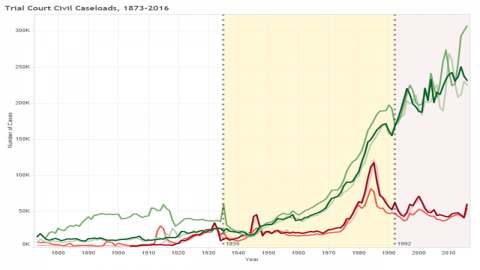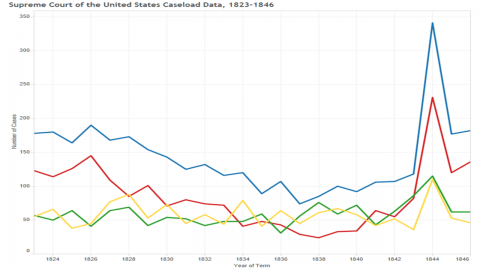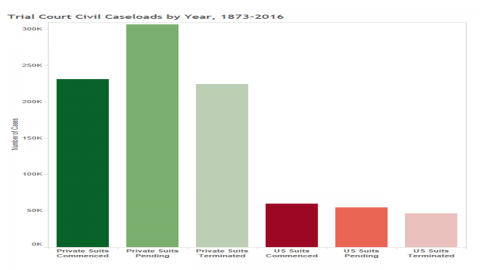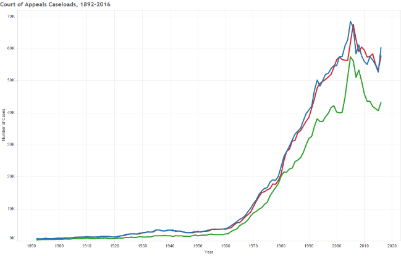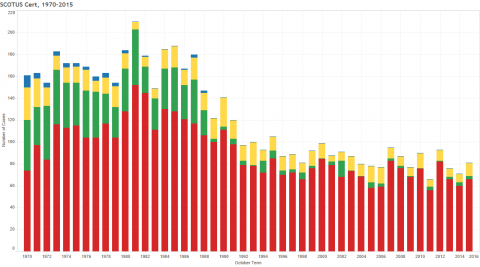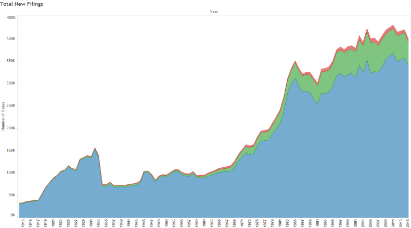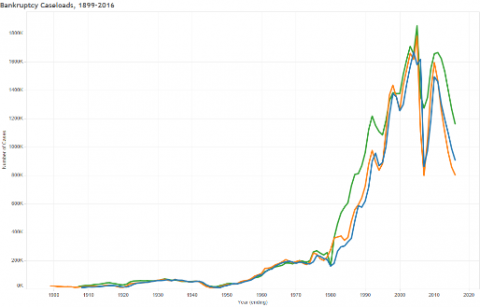Early Caseload Studies
Prior to 1870, the federal government conducted sporadic studies of federal court caseloads. These studies were often motivated by a particular substantive legal issue or political initiative. For example, the first such study, undertaken by Secretary of State and future President James Madison in 1801, was intended to buttress arguments in favor of repealing the controversial Judiciary Act of 1801. Since the proposed repeal involved the abolition of several newly-created judicial posts, Madison and his Republican allies sought to show that a smaller number of judges could shoulder the burden of the existing caseload.
One of the few systematic caseload studies of a substantial duration during the pre-Civil-War era was the Supreme Court’s effort to document its caseloads between 1823 and 1846. The chart below shows the data compiled in that study. The apparent spike in cases in 1844 reflects the Supreme Court’s transition from terms beginning in January to terms beginning in December, with the consequence that there were two 1844 terms (with the December term mostly involving cases decided the following year). Researchers can find detailed descriptions of the other pre-1870 caseload studies here.

